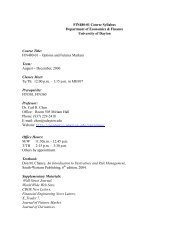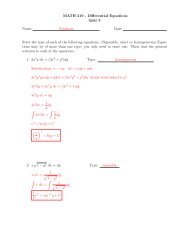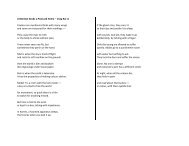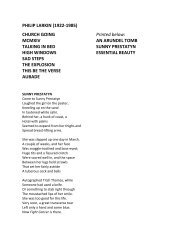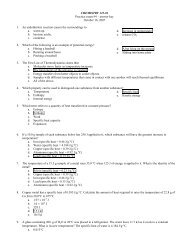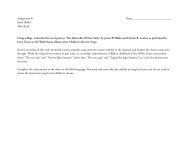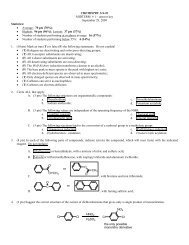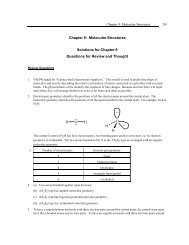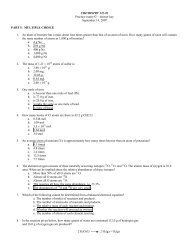Chap 26
Chap 26
Chap 26
Create successful ePaper yourself
Turn your PDF publications into a flip-book with our unique Google optimized e-Paper software.
230 CHAPTER 10<br />
directors of the regional banks are hardly key players in the Federal Reserve System. Essentially, the<br />
most important task they perform is nominating a president for the regional bank. The regional<br />
banks’ presidents are important. The directors, however, do not get much freedom in this choice<br />
because their nominee must be approved by the Board of Governors, which does not hesitate to veto<br />
anyone considered unacceptable.<br />
Regional bank presidents gain their power from sitting on the FOMC. But there they are a minority<br />
because the voting members of the FOMC consist of five regional bank presidents and seven<br />
members of the Board of Governors. Because the board members are appointed by the president and<br />
approved by the Senate, the government thus wields the ultimate power in the Federal Reserve. The<br />
regional bank presidents must be approved by the publicly appointed board members and the board<br />
members constitute a majority on the FOMC.<br />
5. Controlling the Quantity of Money<br />
It is useful to look at the Fed’s balance sheet (available on its excellent Web site). It shows very<br />
quickly that loans to banks usually are a trivial portion of the Fed’s assets. Of the Fed’s theoretical<br />
three tools, only open market operations really matter and there is no harm in being blunt about this.<br />
Students can easily see why required reserve ratio changes would work, but also can see quickly how<br />
discontinuous and disruptive they would be. Tell students that (a) many industrialized countries no<br />
longer bother with required reserve ratios at all, and (b) changes in required reserve ratios are<br />
normally only used as monetary policy tools in developing countries without capital markets in<br />
which open market operations would be possible. The discount rate looks like it ought to matter<br />
more, and certainly changes in it are announced, but explain that it is in practice a signal: banks only<br />
borrow from the Fed as a last resort. Why? Because banks believe that if they borrow from the Fed,<br />
that will be interpreted as meaning that they cannot borrow from any other source, so they are in<br />
very bad trouble. So what actually matters is the Federal Funds Rate, which the Fed can influence<br />
very strongly by changing the supply of reserves by Open Market Operations.<br />
The Big Picture<br />
Where we have been<br />
Because <strong>Chap</strong>ter 10 is the first chapter on money, it introduces a lot of new material. The discussion<br />
of monetary policy goals relates back to <strong>Chap</strong>ter 5 which introduced the main topics of<br />
macroeconomics.<br />
Where we are going<br />
<strong>Chap</strong>ter 10 is the first of three chapters that examine money and the economy. <strong>Chap</strong>ter 11 examines<br />
how money influences interest rates, real GDP, and the price level. <strong>Chap</strong>ter 12 looks at the monetary<br />
phenomenon of inflation and how it impacts unemployment and interest rates.




